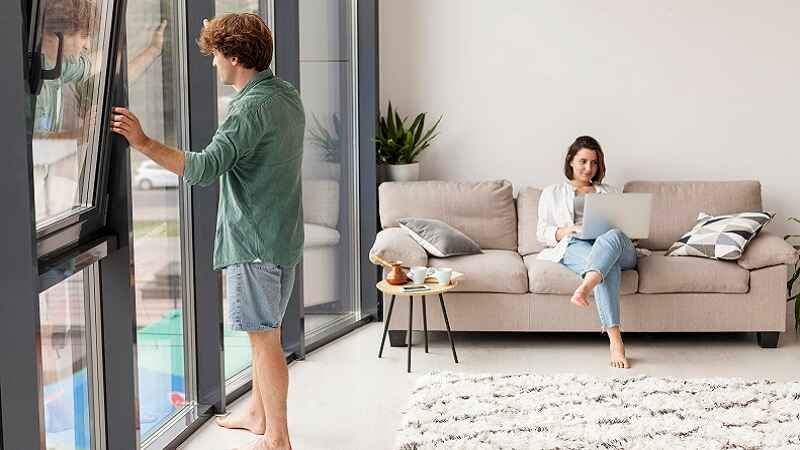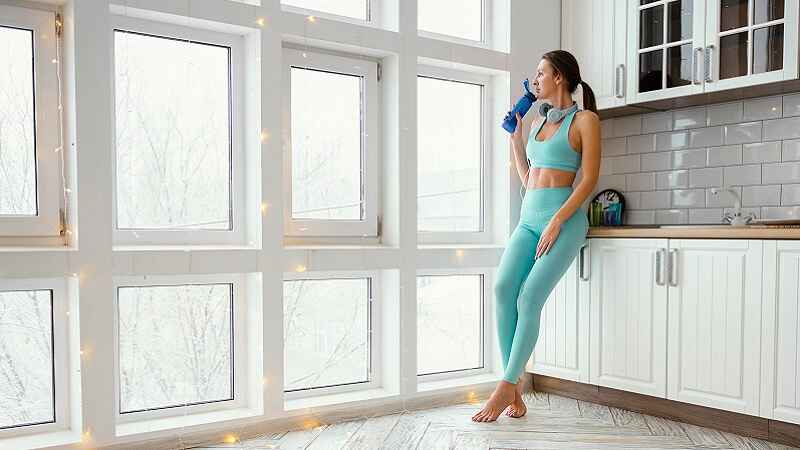Windows and doors are more than just architectural elements — they are vital components that define a building’s functionality, safety, and aesthetic appeal. From providing ventilation and natural light to enhancing security and energy efficiency, the right choice of windows and doors can completely transform your home or office.
In this comprehensive guide, we’ll explore everything about windows and doors — their types, materials, benefits, installation, and maintenance — to help you make informed decisions for your next project.
1. Introduction to Windows and Doors
Windows and doors serve as essential links between indoor and outdoor spaces. They control how light, air, and sound enter your home while ensuring privacy and protection.
Modern architecture emphasizes their design and functionality, using materials that are both durable and energy-efficient. Whether you’re building a new home or renovating an old one, investing in high-quality windows and doors can dramatically improve comfort, appearance, and value.
2. Importance of Windows and Doors in a Building
Windows and doors play a crucial role in how a building performs. Their design and placement impact temperature regulation, air circulation, and lighting. Below are some key functions they serve:
2.1 Ventilation
Windows and doors allow fresh air to circulate inside, maintaining indoor air quality and preventing humidity buildup.
2.2 Natural Light
Strategically placed windows let in sunlight, reducing the need for artificial lighting during the day.
2.3 Security
Doors and windows act as entry and exit points, so their construction must ensure safety against intruders.
2.4 Energy Efficiency
Well-insulated windows and doors prevent heat loss in winter and block excess heat in summer, lowering energy costs.
2.5 Aesthetic Appeal
Their design contributes significantly to a building’s style — from traditional charm to modern minimalism.
3. Types of Windows
Windows come in various styles, each serving different purposes and design aesthetics. Here are the most common types:
3.1 Casement Windows
Casement windows are attached to the frame by side hinges and open outward using a crank. They provide excellent ventilation and a clear, unobstructed view.
3.2 Sliding Windows
Sliding windows open horizontally along a track. They are space-saving, easy to operate, and ideal for modern homes.
3.3 Double-Hung Windows
These have two movable sashes that slide vertically. They’re classic in style and allow flexible airflow control.
3.4 Awning Windows
Awning windows open outward from the bottom, allowing ventilation even during light rain. They are commonly used in bathrooms or kitchens.
3.5 Bay and Bow Windows
These windows extend outward from the wall, creating more interior space and allowing panoramic outdoor views.
3.6 Skylights
Installed in roofs, skylights bring in natural light from above, brightening interior spaces and reducing electricity usage.
4. Types of Doors
Just like windows, doors come in multiple designs and functionalities suited for different parts of a building.
4.1 Hinged Doors
These are the most common doors, attached to a frame with hinges. They can be single or double doors and are used for both interior and exterior entrances.
4.2 Sliding Doors
Sliding doors glide horizontally on a track and are often used for patios or balconies, providing a wide opening and scenic view.
4.3 French Doors
French doors consist of glass panels framed in wood or metal, offering elegance and allowing natural light between rooms or from outside.
4.4 Bi-Fold Doors
These doors fold in sections, creating wide openings — perfect for connecting indoor and outdoor living spaces.
4.5 Pocket Doors
Pocket doors slide into a wall cavity, saving space in compact rooms or hallways.
4.6 Security Doors
Built with reinforced materials like steel or aluminum, these doors are designed for maximum protection and durability.
5. Materials Used for Windows and Doors
The material you choose affects durability, maintenance, insulation, and appearance. Here are the main options:
5.1 Wood
Wood offers a classic look, excellent insulation, and natural beauty. However, it requires regular maintenance to prevent warping or rotting.
5.2 Aluminum
Lightweight and corrosion-resistant, aluminum is ideal for modern designs. It’s strong, durable, and requires minimal maintenance.
5.3 uPVC (Unplasticized Polyvinyl Chloride)
uPVC windows and doors are energy-efficient, weather-resistant, and affordable. They are popular for both residential and commercial projects.
5.4 Fiberglass
Fiberglass combines strength and insulation, making it an energy-efficient and low-maintenance choice.
5.5 Steel
Used primarily for security doors, steel provides unmatched strength but can be prone to rust if not coated properly.
5.6 Glass
Glass is often used in combination with other materials. It enhances aesthetics and allows maximum light transmission.
6. Energy Efficiency and Insulation
Energy-efficient windows and doors are essential for maintaining indoor comfort while reducing energy bills. Modern designs incorporate:
-
Double or Triple Glazing: Two or three layers of glass with air or gas-filled spaces to improve insulation.
-
Low-E Coatings: Reflect heat back inside during winter and keep it out in summer.
-
Weather Stripping: Prevents air leaks around window or door frames.
-
Thermal Break Frames: Aluminum frames with plastic sections that reduce heat transfer.
Choosing energy-efficient options helps minimize carbon footprint and creates a sustainable living environment.

7. Design and Aesthetic Considerations
Windows and doors play a key role in defining the look of your home. When selecting designs:
-
Match Architectural Style: Choose shapes and materials that complement your home’s overall theme — traditional, modern, or rustic.
-
Color Coordination: Frame colors should harmonize with wall paint and roofing.
-
Proportion and Placement: Large windows can make small rooms appear more spacious.
-
Decorative Glass: Frosted, tinted, or stained glass adds privacy and style.
8. Security Features in Modern Windows and Doors
Security is one of the most critical considerations in modern construction. High-quality windows and doors incorporate:
-
Multi-Point Locking Systems: Offer multiple lock points for greater protection.
-
Tempered or Laminated Glass: More resistant to breakage and intrusion.
-
Reinforced Frames: Prevent forced entry and increase durability.
-
Smart Locks: Allow remote access and monitoring through mobile devices.
These advancements ensure peace of mind while maintaining style and functionality.
9. Maintenance Tips for Windows and Doors
Proper maintenance extends the lifespan of your windows and doors. Follow these practical tips:
9.1 Regular Cleaning
Clean glass, frames, and hardware to remove dust, grime, and moisture buildup.
9.2 Lubrication
Apply lubricant to hinges, tracks, and locks to keep them functioning smoothly.
9.3 Inspect for Damage
Check seals, frames, and glass for cracks or gaps that could lead to energy loss or water leaks.
9.4 Repainting and Refinishing
Wooden doors and windows may need occasional repainting to maintain their beauty and protection.
9.5 Replace Worn Weather Stripping
Ensure insulation remains effective by replacing worn or damaged seals.
10. Installation Process
The performance of windows and doors depends heavily on proper installation. Here’s what the process usually involves:
10.1 Measurement and Planning
Accurate measurements ensure a perfect fit and prevent air leaks.
10.2 Frame Preparation
Installers prepare the space and secure frames firmly to prevent movement or warping.
10.3 Sealing and Insulation
Sealants are applied to prevent moisture entry and improve energy efficiency.
10.4 Finishing Touches
Finally, trims and hardware are fitted, and functionality is tested to ensure smooth operation.
Always hire professional installers to ensure safety and compliance with building standards.
11. Innovations and Smart Technology in Windows and Doors
Technology has revolutionized the window and door industry. Some of the latest innovations include:
-
Smart Glass: Adjusts transparency automatically to control light and privacy.
-
Remote-Controlled Blinds: Integrated blinds can be operated with apps or voice commands.
-
Energy-Monitoring Systems: Track temperature and energy performance.
-
Automated Doors: Open and close using motion sensors for convenience and accessibility.
These smart solutions blend modern convenience with sustainable living.
12. Environmental Impact and Sustainability
Eco-friendly windows and doors contribute to a greener planet. Many manufacturers now focus on:
-
Recycled Materials: Using recycled aluminum, glass, and wood.
-
Eco-Friendly Manufacturing: Minimizing emissions during production.
-
Energy-Saving Design: Reducing energy consumption in homes and offices.
Sustainable designs not only reduce environmental impact but also lower long-term costs.
13. Common Problems and Solutions
Even high-quality installations can face issues over time. Here are some common problems and how to fix them:
| Problem | Possible Cause | Solution |
|---|---|---|
| Drafts | Gaps or damaged seals | Replace weather stripping |
| Condensation | Poor insulation or humidity | Upgrade to double glazing or dehumidify |
| Sticking Windows | Dirt or misalignment | Clean tracks, adjust hinges |
| Peeling Paint | Moisture damage | Repaint with waterproof coatings |
| Noise Leakage | Thin glass | Use laminated or double-glazed glass |
14. Cost of Windows and Doors
Prices vary depending on material, design, size, and installation.
14.1 Average Costs
-
Standard uPVC windows: $150–$500 each
-
Wooden windows: $500–$1,200
-
Exterior doors: $500–$2,000
-
Sliding or French doors: $1,000–$3,500
14.2 Long-Term Value
Although high-quality materials cost more initially, they provide better insulation, durability, and property value — saving money in the long run.
15. Choosing the Right Windows and Doors for Your Home
Here are some tips to help you make the right selection:
-
Consider Climate: Choose materials that suit your local weather conditions.
-
Focus on Function: Prioritize energy efficiency, ventilation, and security.
-
Check Certifications: Look for energy ratings and safety standards.
-
Consult Experts: Professional guidance ensures proper design and installation.
16. The Future of Windows and Doors
As architecture evolves, so do the technologies behind windows and doors. The future focuses on:
-
Smart automation for seamless control.
-
Solar glass that generates energy.
-
Self-tinting materials for climate adaptation.
-
Sustainable production methods that minimize waste.
These innovations aim to create homes that are not only stylish but also energy-efficient and environmentally responsible.
17. Conclusion
Windows and doors are more than structural necessities — they’re investments in comfort, safety, and sustainability. The right combination of design, material, and technology can dramatically enhance your living environment, providing beauty, efficiency, and peace of mind.
Whether you’re building a new home or renovating an existing one, choosing high-quality windows and doors ensures that your space remains secure, energy-efficient, and aesthetically pleasing for years to come.
